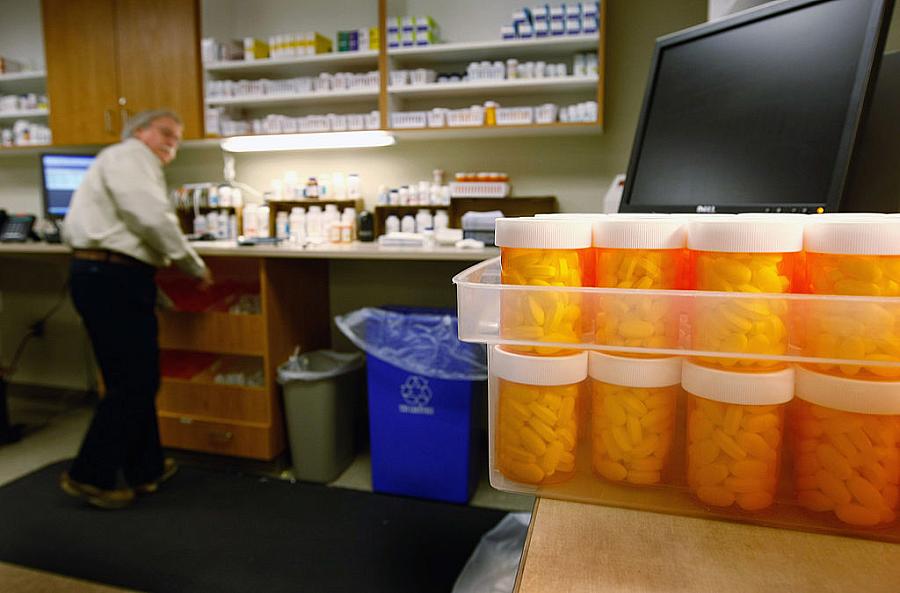Harrowing portrait of generic drug industry shows us why regulators need to show up

(Photo by John Moore/Getty Images)
Are generic medications interchangeable with one another and with brand-name drugs? If you think they are, Katherine Eban’s “Bottle of Lies” might cause you to reconsider.
Eban, an investigative journalist, has spent more than a decade reporting on the state of generic drug manufacturing, particularly in India. Working closely with whistleblowers, industry insiders, academic experts and regulators, she explores the deceptive practices of generic drug firms that produce most of the medications our patients use every day. Eban describes the remarkable reach of international generic drug manufacturers: “Eighty percent of the active ingredient in all our drugs, whether brand or generic, come from overseas, the majority in India and China. Forty percent of the generic drugs — finished doses that we use in this country — come from India alone. Ninety percent of our drug supply is generic. So, the numbers are huge.”
Those of us who were taught that generic drugs are interchangeable with brand-name medications because the FDA requires bioequivalency testing are in for a surprise. Not only does Eban document case after case of unethical practices at large firms producing generics for the global market, but, even more surprisingly, she exposes the frequent lack of action at the FDA when these practices are uncovered by their own investigators.
In Eban’s account, many top officials at the FDA appear more concerned with approving inexpensive drugs than protecting the public's health. They are also slow to question powerful companies and their prestigious law firms, with the latter serving as attractive future employers for agency officials. (These themes of regulatory capture will not come as a surprise to those who have closely followed the agency's dereliction of duty on supplement regulation.)
Early in the book, readers are introduced to a key industry insider, Dinesh Thakur, who leaves a promising career at Bristol-Myers Squibb to join a large Indian generic pharmaceuticals firm, Ranbaxy Laboratories. Ranbaxy’s goal is to become a top international firm supplying inexpensive generics to the world, with a global sales target of $5 billion by 2012. Thakur’s experiences —watching the firm bury evidence of fraud from FDA regulators — would eventually lead him to a career in international advocacy, dedicating himself to improving the quality of generic drugs. This path was not without devastating effects on his career and personal life, however.
While Thakur was attempting to alert the FDA to fraudulent practices, physicians in the U.S. were also noticing problems. Cardiologist-turned-sleuth Larry Lever at the Cleveland Clinic developed an obsession with poor quality generic drugs and their risks to patients while caring for his patients with cardiomyopathy, a condition in which the heart struggles to pump blood to the rest of the body. He found that the quality of the generic cardiac drugs his patients were taking varied from manufacturer to manufacturer. He would often find that changing his patients to a drug made by another manufacturer would improve their cardiac condition.
Despite the work of advocates such as Thakur and Lever, pressure at the FDA to approve inexpensive alternatives to brand-name drugs often trumped safety concerns. Consumers and physicians were told that safety could be assured in the U.S. market because the FDA required testing to prove the generic and name-brand versions of drugs were equivalent. This is true in principle, but problems began when companies create fraudulent reports to submit to the FDA for approval. And even when these practices have been exposed, the FDA has often failed to crack down on offending companies. The challenges of inspecting international firms, complicated diplomatic relationships with foreign regulators and the imperative to provide inexpensive drugs often seem to overwhelm or bewilder the agency.
Eban’s investigation suggests that the lack of FDA enforcement permits an environment of fraud and lies to persist in many firms supplying generics to the global market. The ability of the U.S. to fund inexpensive treatment, for example, to treat HIV in Africa initially led generic manufacturing firms to outbid one another to provide medications for lower and lower prices. A medication that cost $8,000 or more a year in the U.S. was produced for $2 a day or less. These bargains were too good to pass up or to even question. But ensuring these low prices often led to corner-cutting, and the result was inconsistent quantities of active agents from batch to batch and poor design of capsules — a threat to patients’ safety and lives.
Eban argues that this is not just a problem in the developing world and that patients in the U.S. today continue to be exposed to risks when they receive inadequate dosages of pharmaceuticals from poorly produced generic medications. After “Bottle of Lies,” we'll be adding another diagnosis when a patient with a previously well-controlled chronic disease loses ground. As before, we'll consider the possibility that the problem may be due to the natural history of the disease, a new environmental exposure, a change in diet or lack of compliance. But now, we'll also need to consider the possibility that it could have been triggered by unscrupulous manufacturing practices of an essential medication. In such cases, the best step may not be changing the medication or adjusting the dose, but changing the manufacturer. At least until the FDA proves to patients and physicians that it’s up to the task of properly regulating the generics industry.



